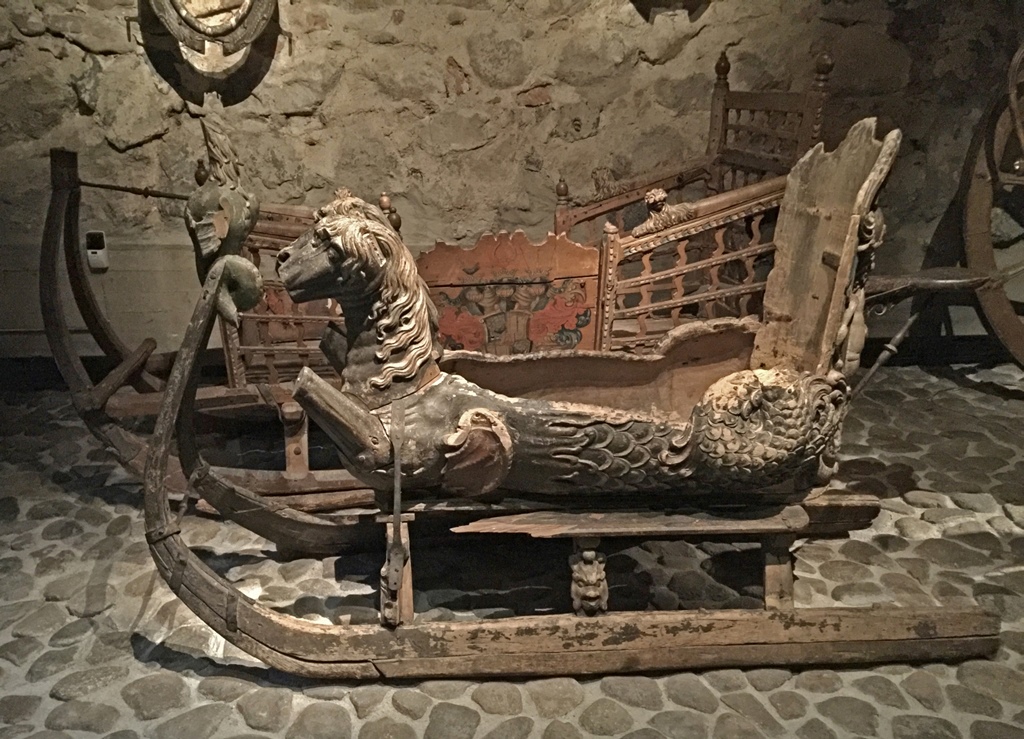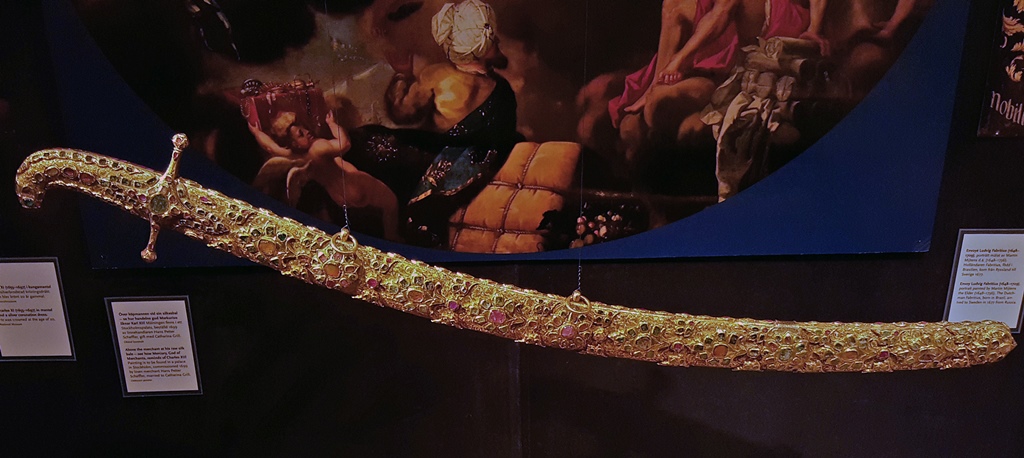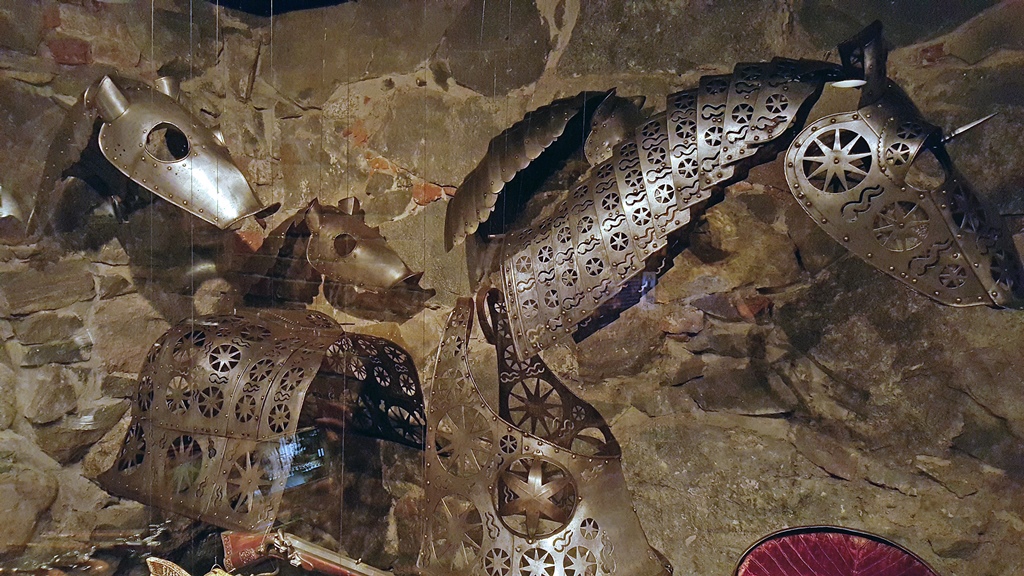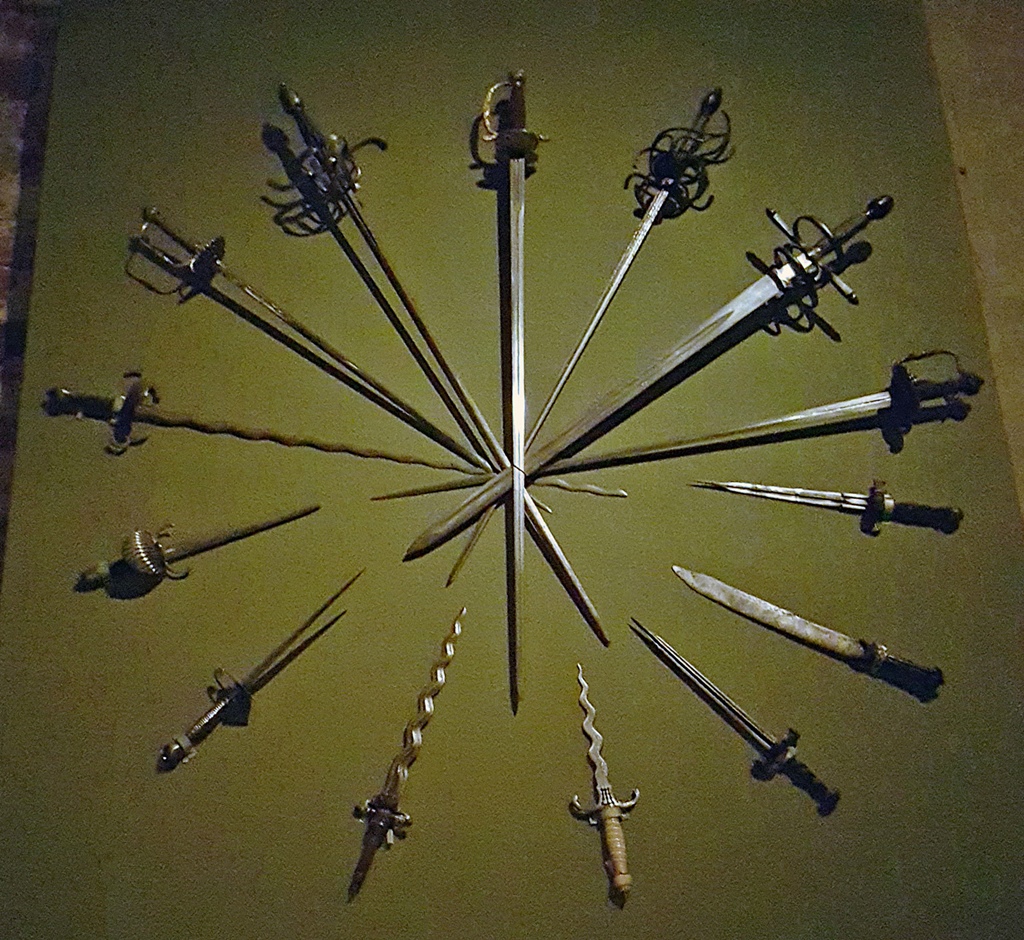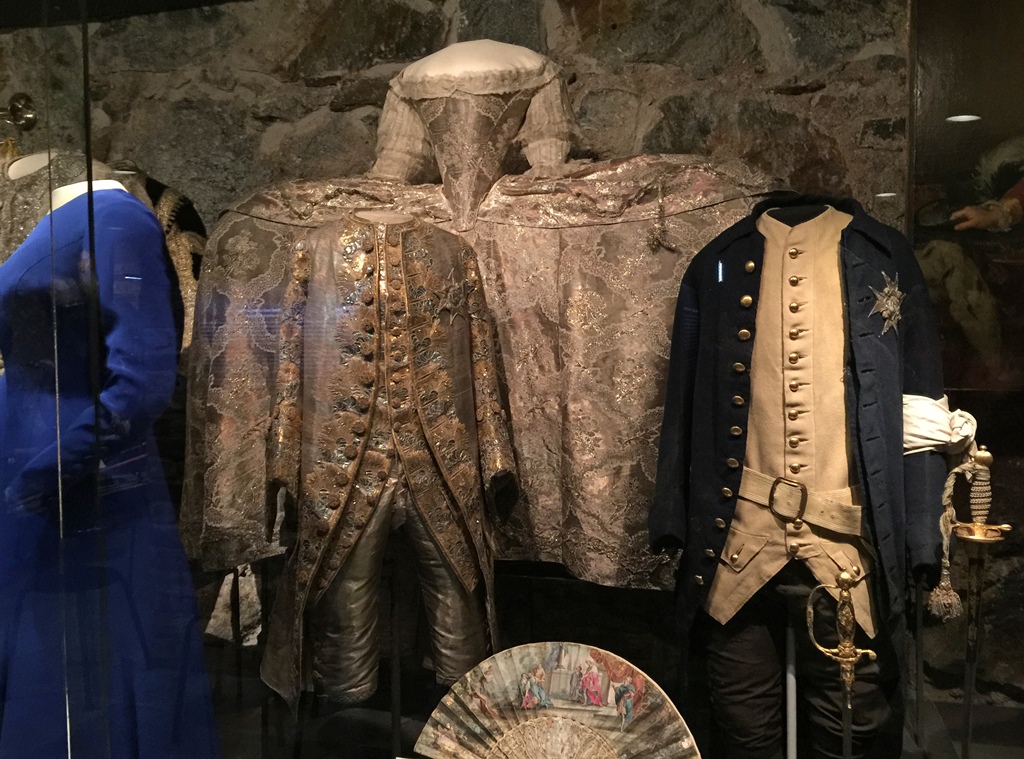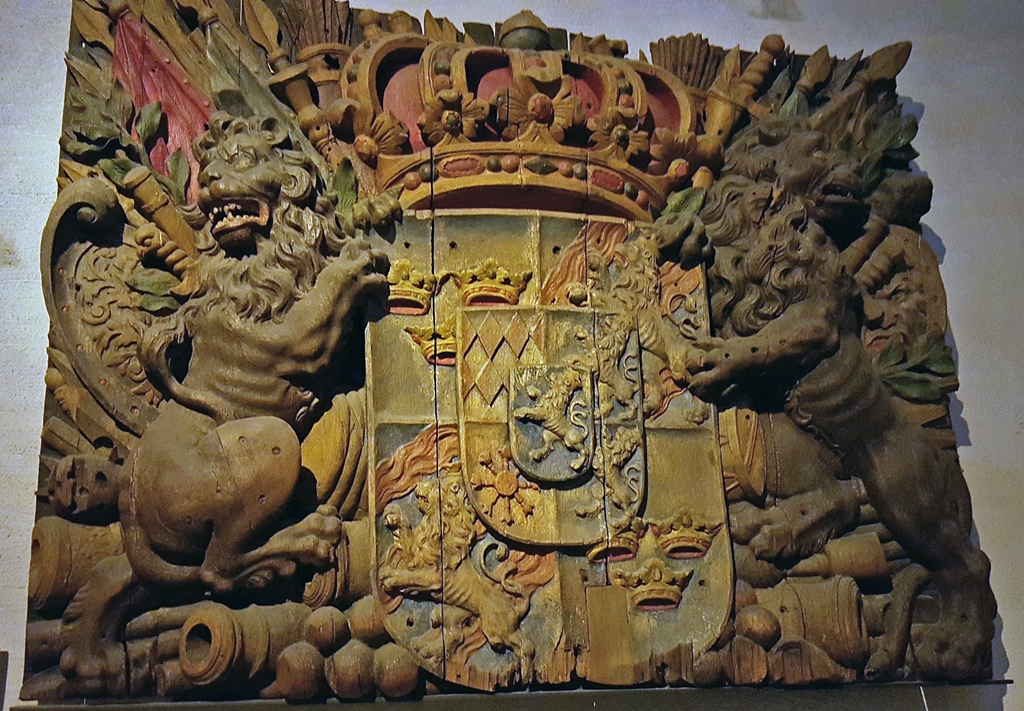We began our next day with a visit to the Royal Armoury,
or Livrustkammaren, found in a lower level of the Royal Palace, near the palace’s southeast
corner (via a relatively unassuming entrance, a short distance from the waterfront). The Armoury
is the oldest museum in Sweden – it was
first established in 1628 by King Gustavus Adolphus, who wanted to preserve the clothing he wore
during his Polish campaign (1626-29). Over the years, the museum expanded, acquiring more clothing
and some actual armor and weaponry. Most of the clothing and armor was ceremonial in nature, and
actual ceremonial carriages were added to the collection toward the end of the 19th Century. The
museum was moved to its present location in the 1970s.
We started by looking at the carriage collection, which is kept in the basement. All of the
following carriages were built in the 18th Century and saw their last use in the 19th Century:
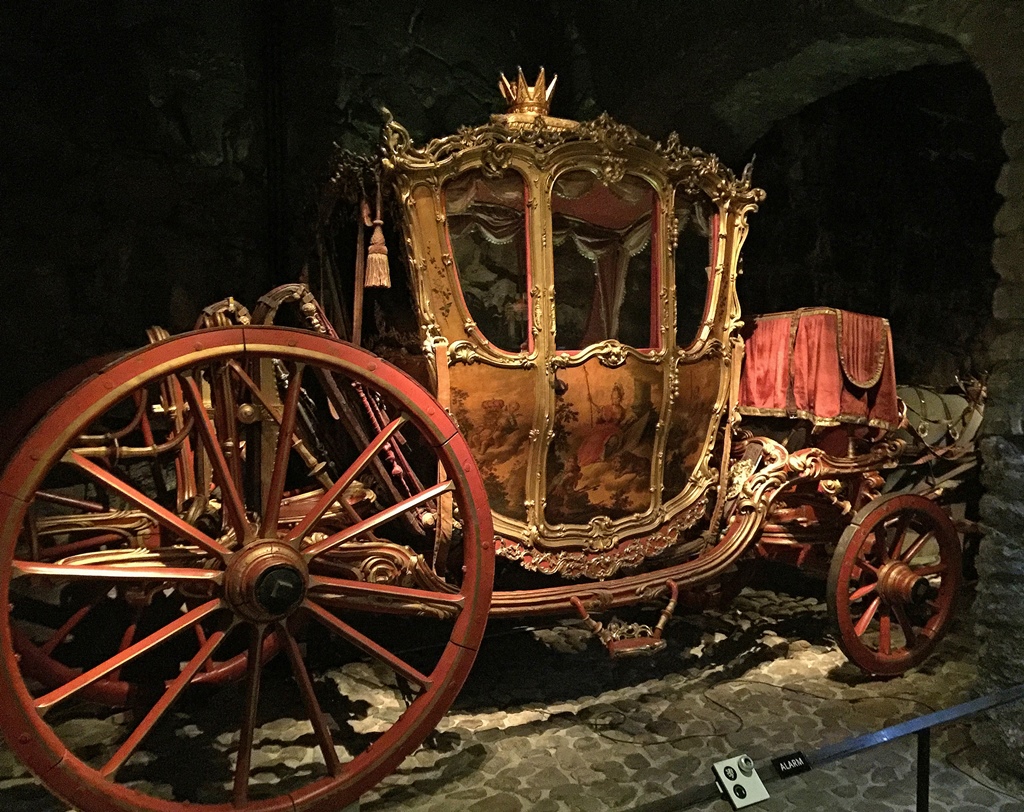
The Queen's Horn Carriage (ca. 1760)
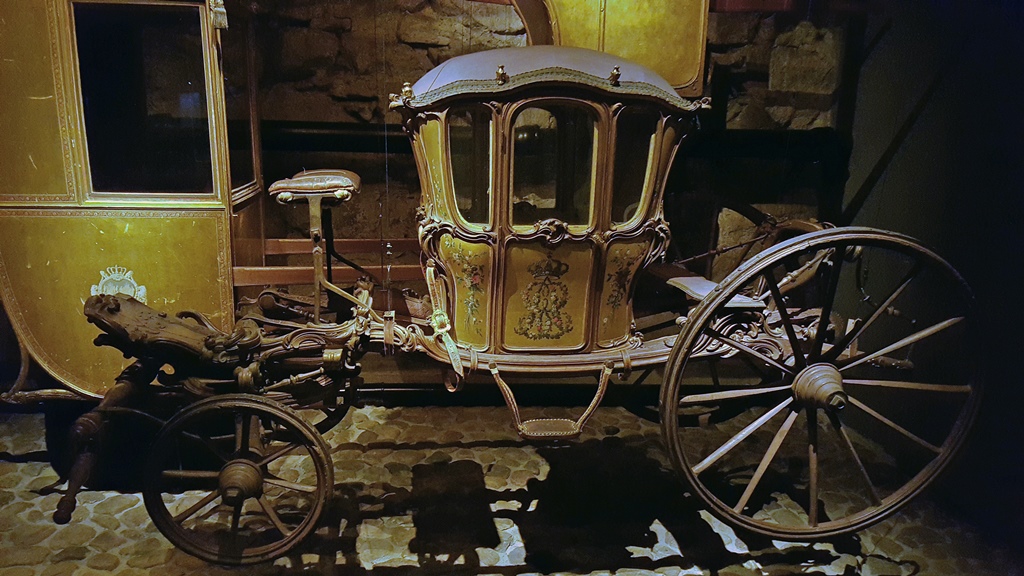
Model of a Berlin Carriage (child-sized, ca. 1750)
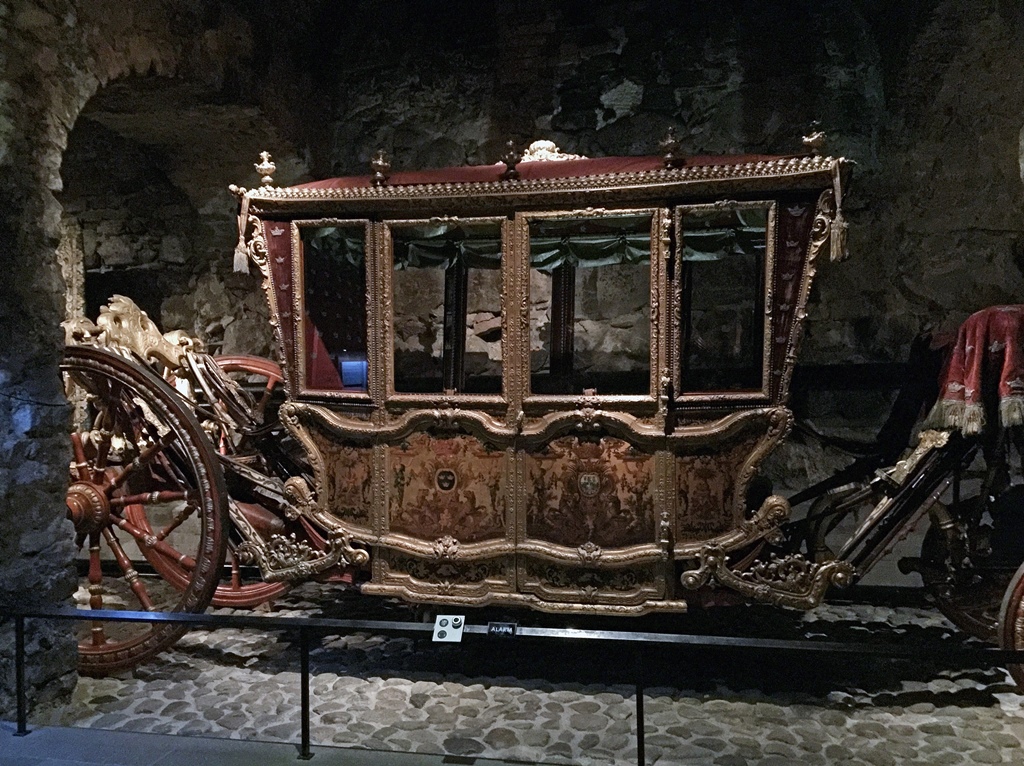
The Burmannia (18th C.)
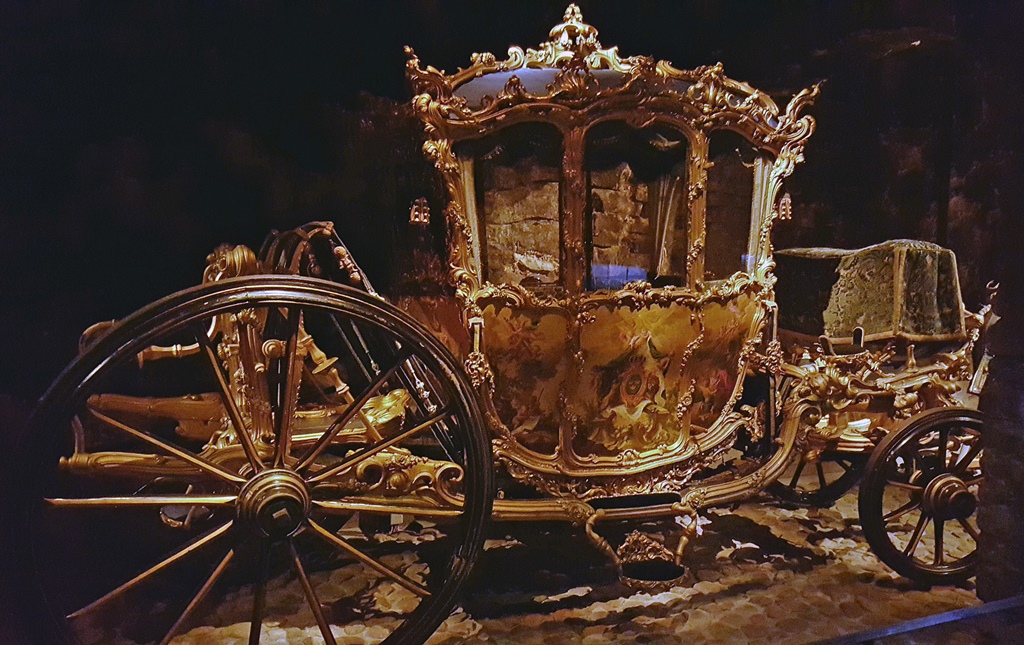
The Crown Prince's Carriage (1763-68)
This being Scandinavia, there are certain months of the year when wheeled vehicles become
impractical. A few snow vehicles are on display, but not many.
Sledges
There was some clothing on display amongst the carriages, but this didn’t strike our interest
too much at the time, so we don’t have much in the way of pictures. However, we did take
notice of a saber in a jewel-encrusted scabbard which was a gift from Shah Soleiman I to
Charles XI, presented in 1687.
Jewel-Encrusted Scabbard (1687)
Heading back upstairs, we found the armor collection. The collection included protective garb
for horses, such as actual armor and caparisons. A caparison is a sort of horse blanket
that can serve as both protection and decoration. For the horse.
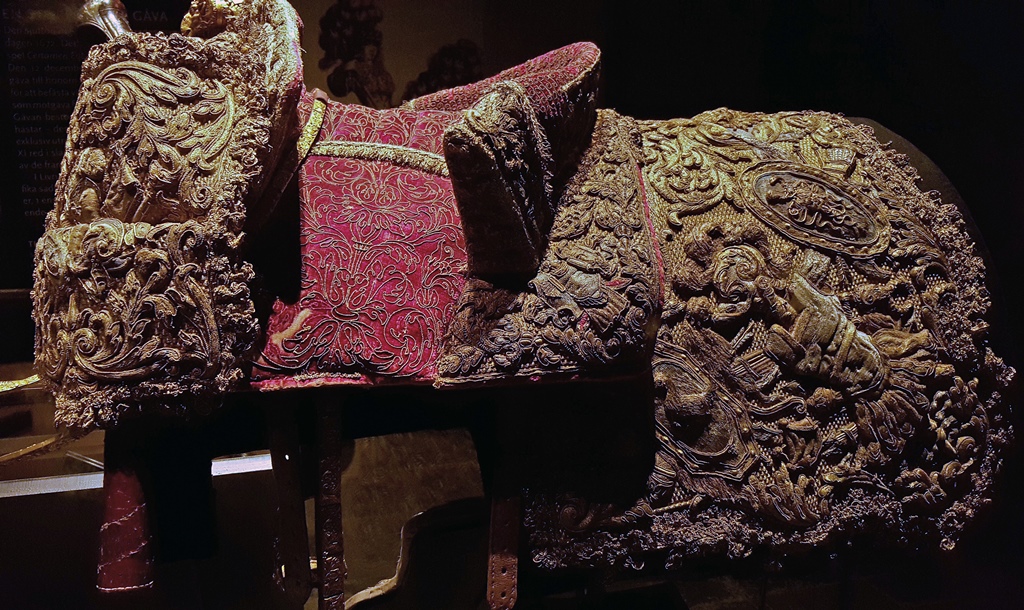
Saddle and Caparison
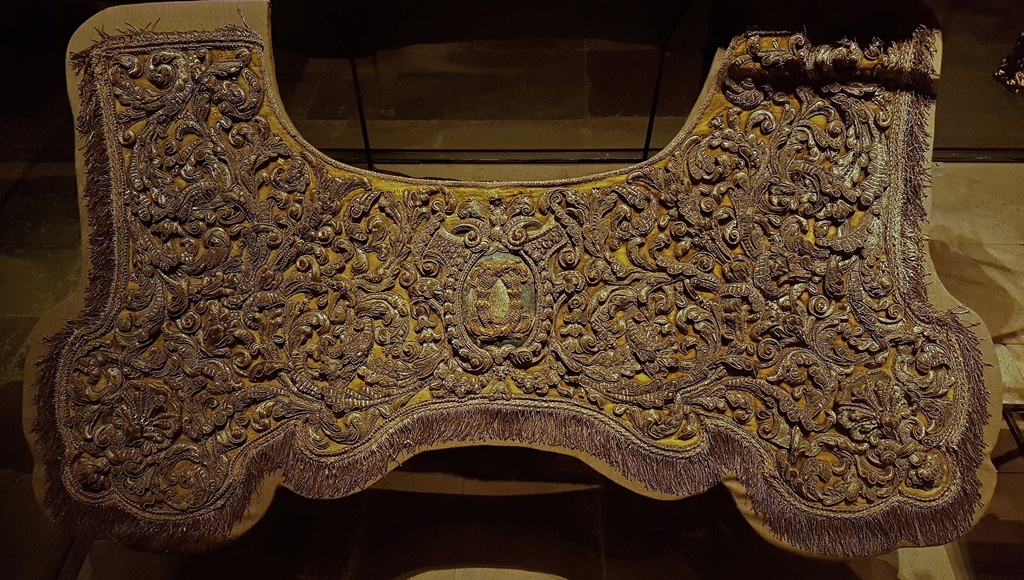
Caparison
Horse Armor
Also in the collection is weaponry, some of which can be stopped by well-designed armor, and
some of which can’t.
Swords and Daggers
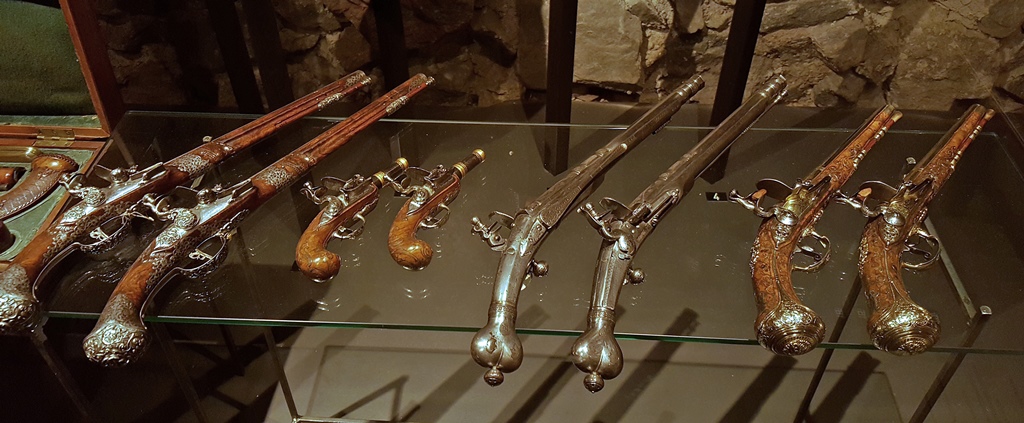
Pistols
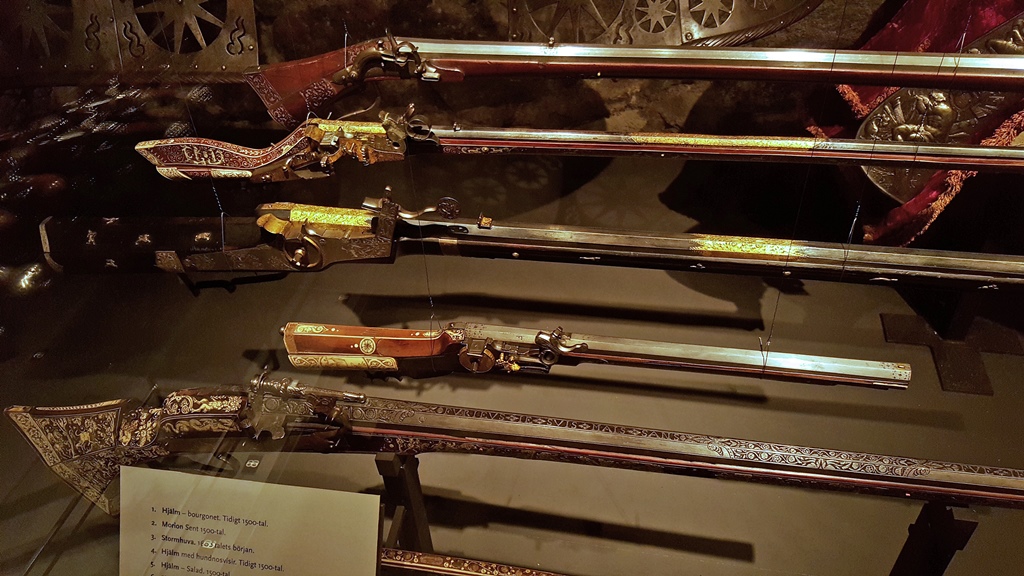
Muskets
And of course, there’s an appreciable amount of armor. Not as much as we’ve seen in other
armouries (like this one), though.
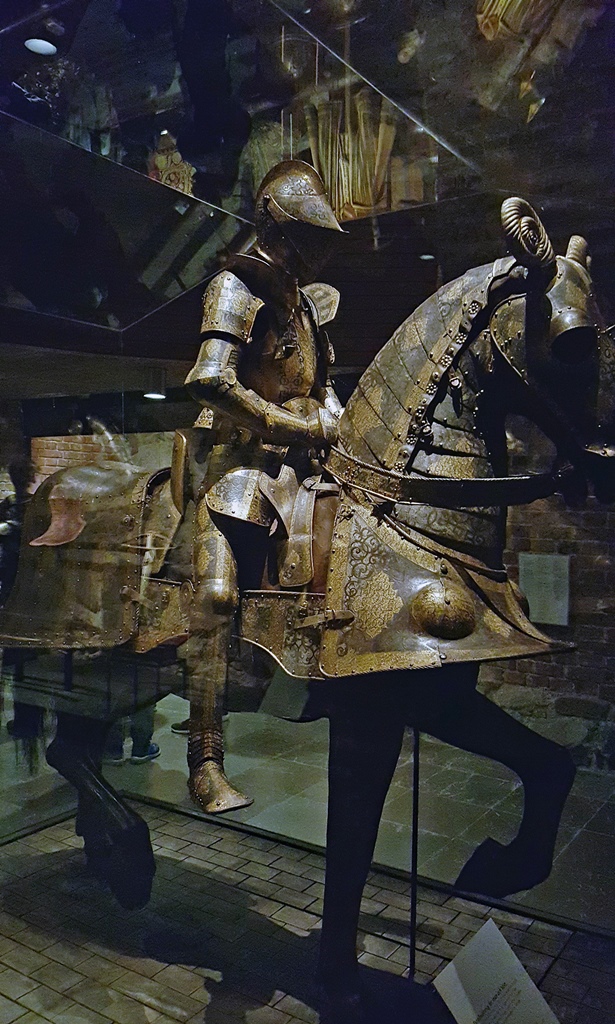
Ceremonial Armor (1550)
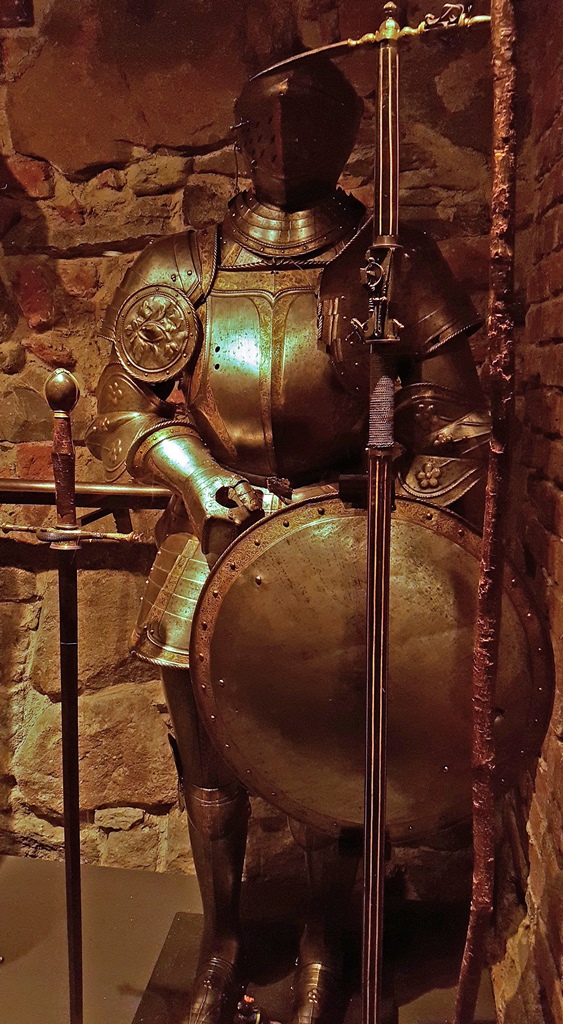
Armor with Shield and Weapons
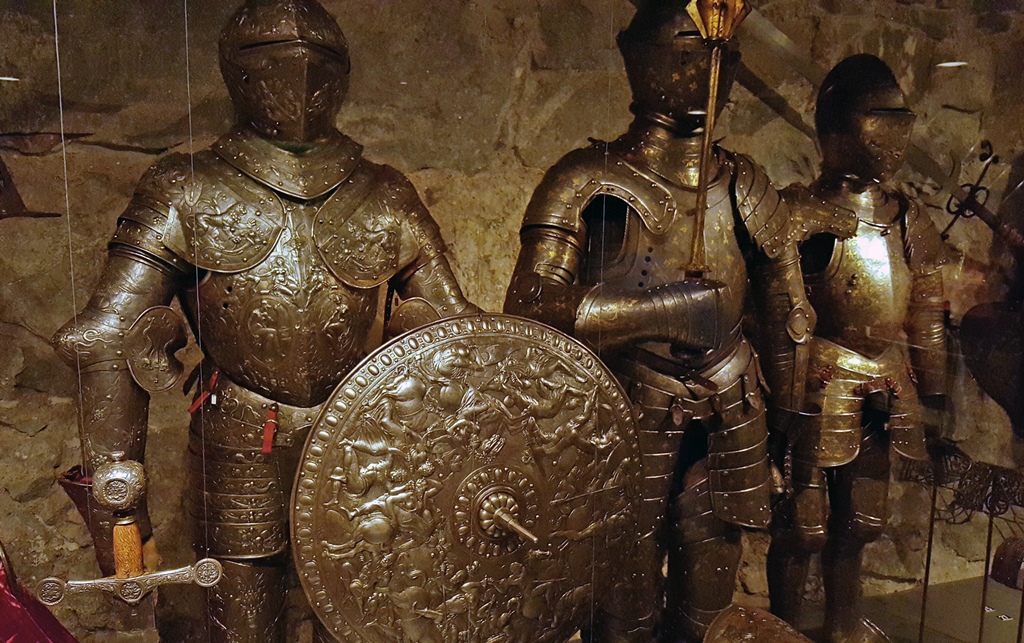
Suits of Armor
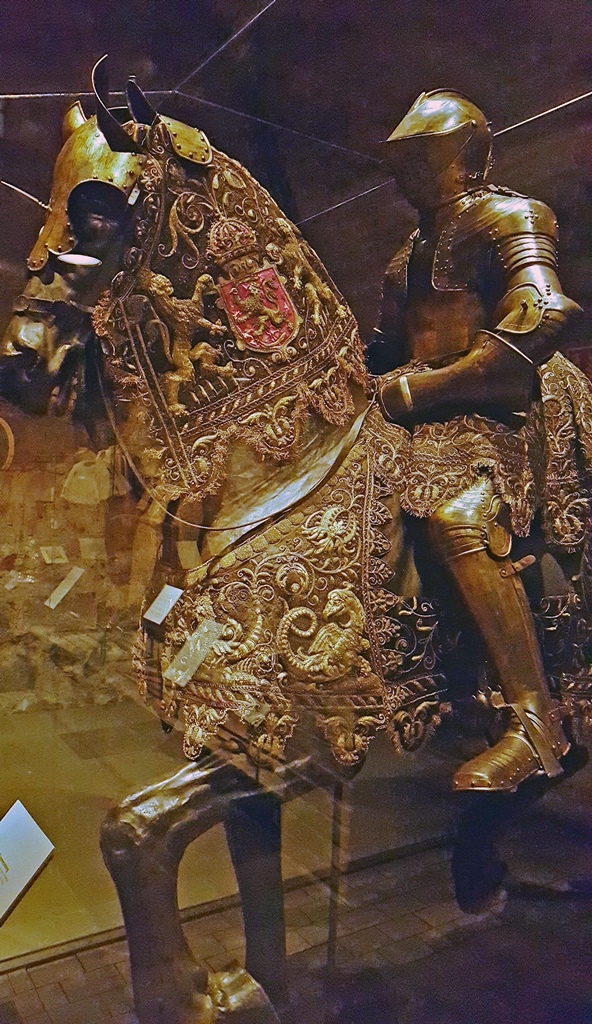
Armor of Gustav II Adolph
On the other hand, this armoury is bigger on clothing than other armouries, making for a
welcome amount of variety. Yes, that’s a 20-inch waist on Sofia Magdalena’s wedding gown,
made wearable by evil undergarments.
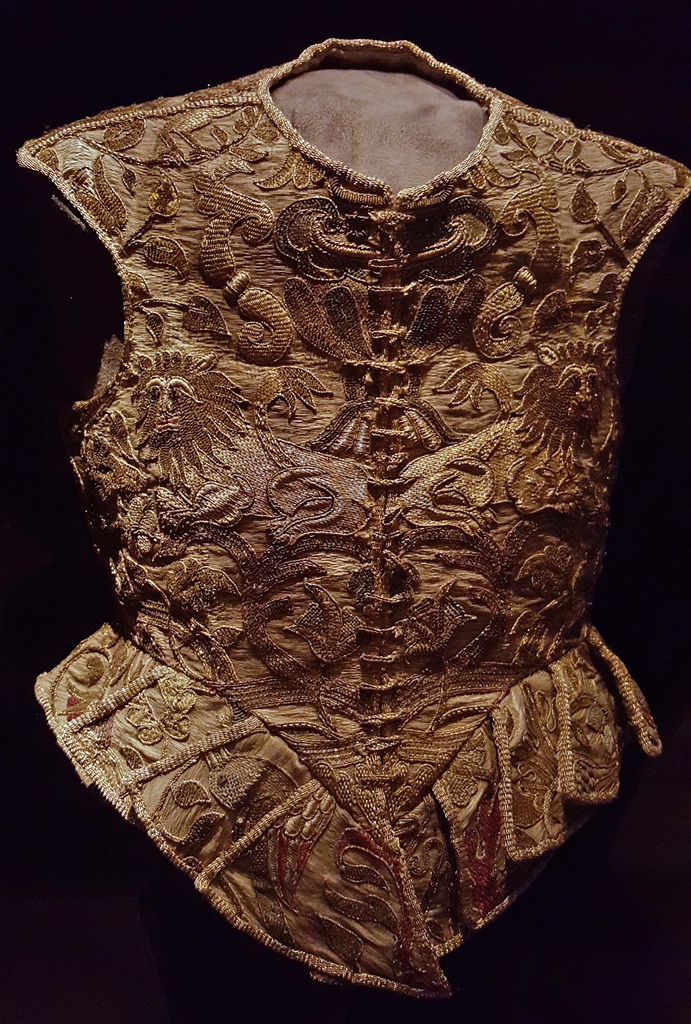
Child's Vest for Gustav II Adolph
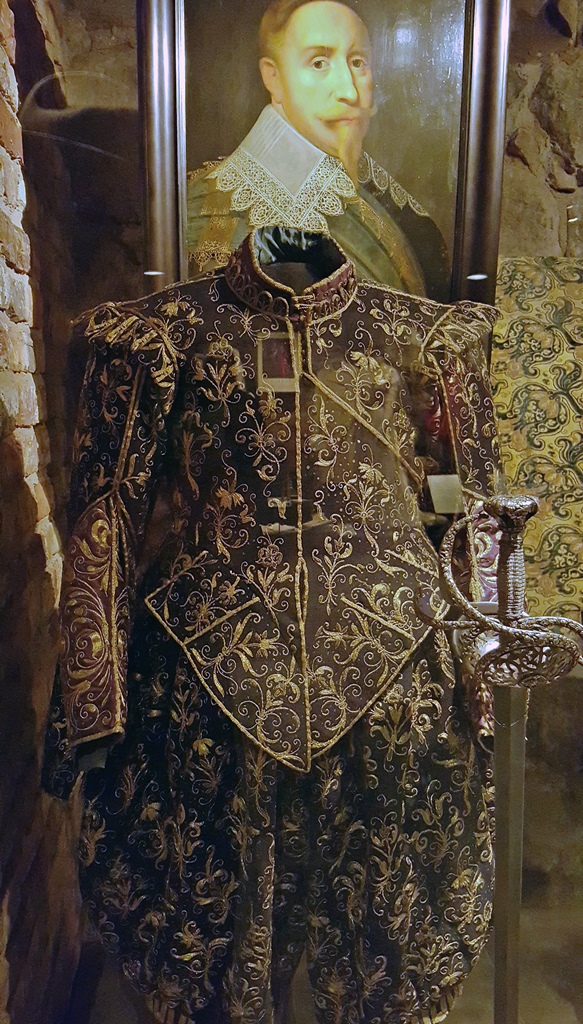
Clothing and Sword of Gustav II Adolph
Wedding Gown of Sofia Magdalena, Clothing of Gustav III
Adding to the variety, a decent amount of jewelry is on display.
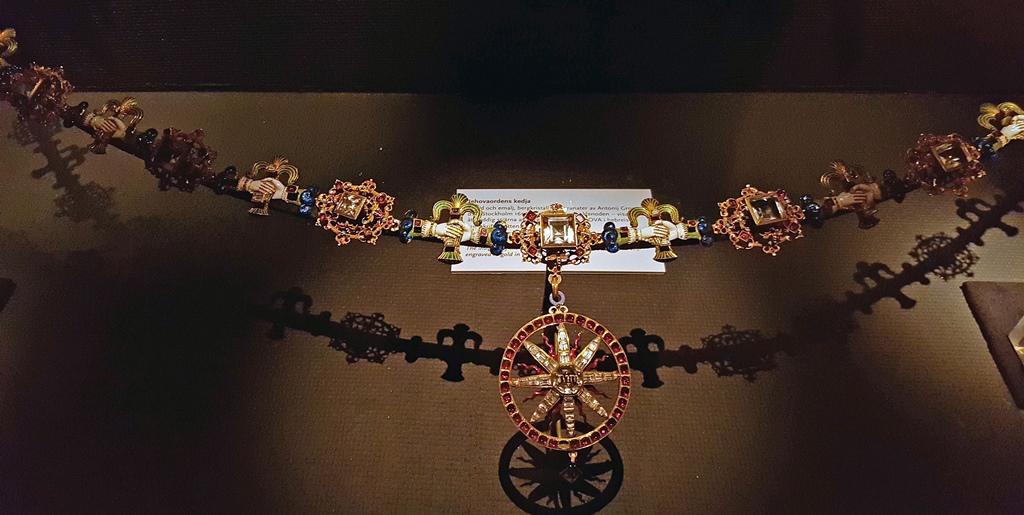
Chain, Order of Jehovah
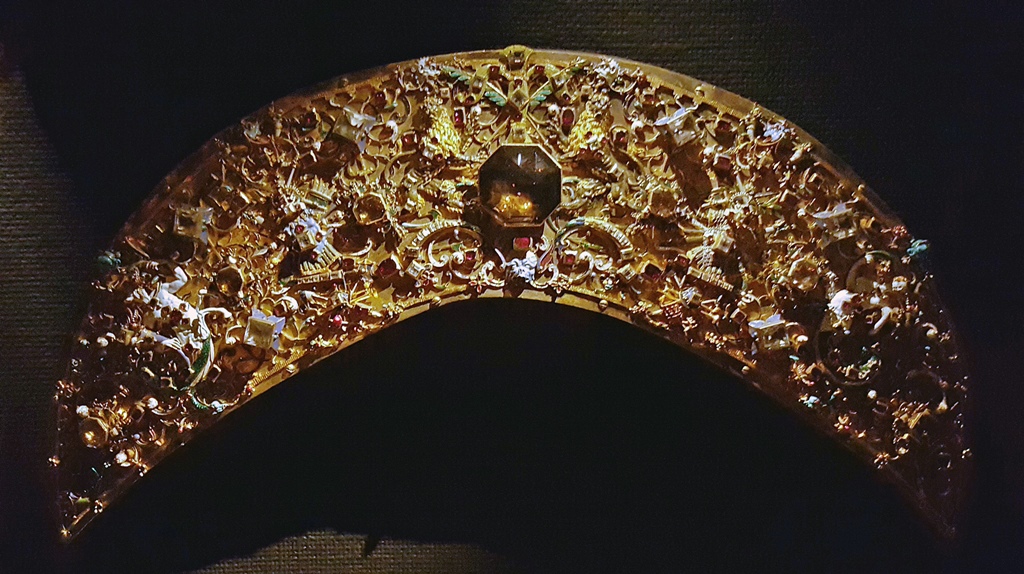
Jewelled Headpiece
Having seen the items on display, we departed the museum, passing a Swedish coat of arms on the way out.
Swedish Coat of Arms, Oak (1654-1718)
On exiting the building, we discovered it was time for the changing of the guard at the
other end of the palace. This was made evident by the band and new guard marching up
Slottsbacken (the street that borders the palace on the south), right in front of us. But
this time, they were wearing different uniforms from the ones we’d seen a few days earlier,
with shiny spiked helmets. And there were horses underneath them.
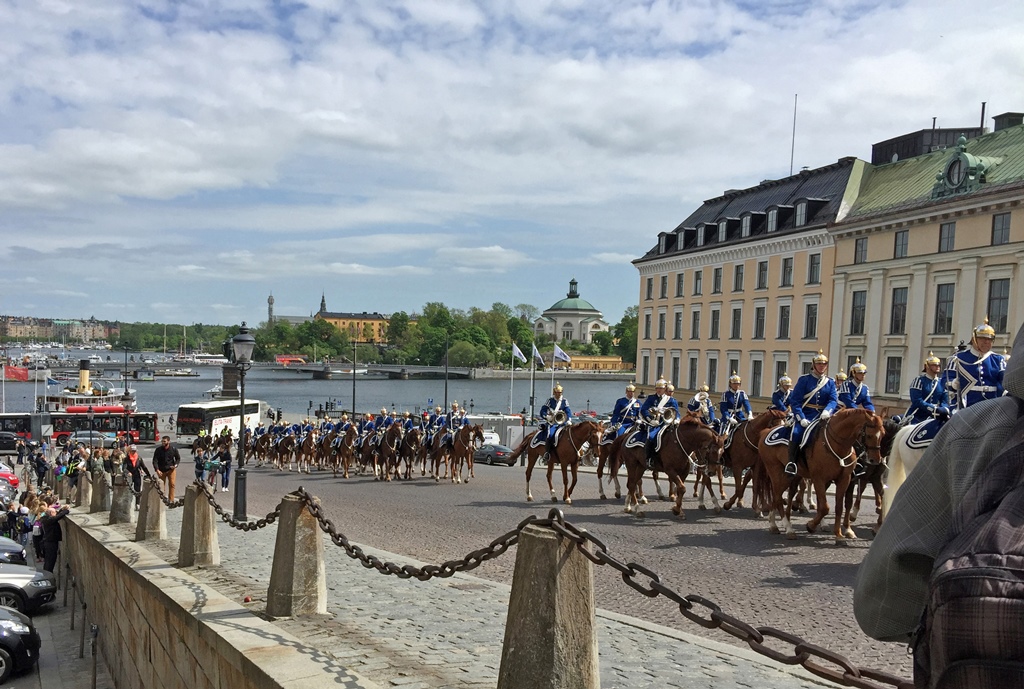
Band and New Guard Climbing Slottsbacken
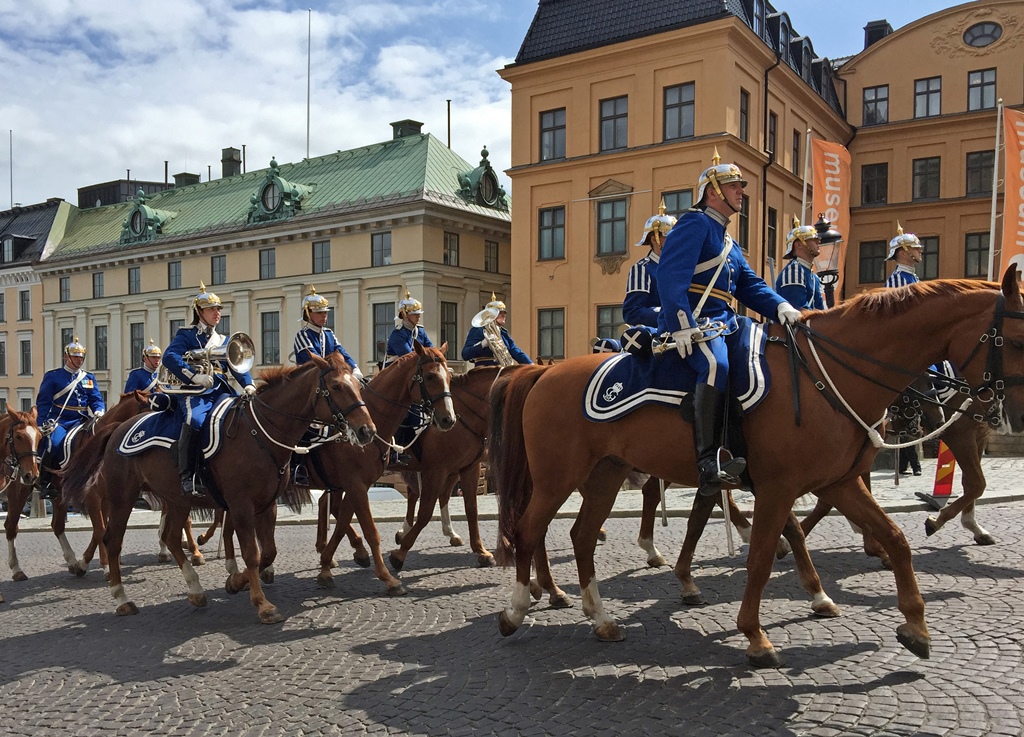
Band on Horseback
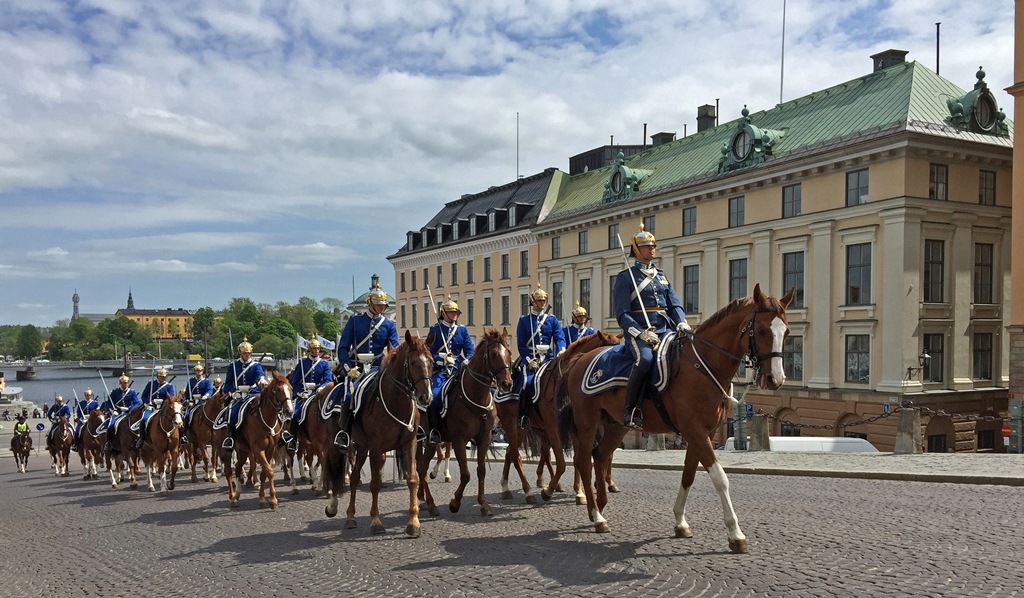
New Guard
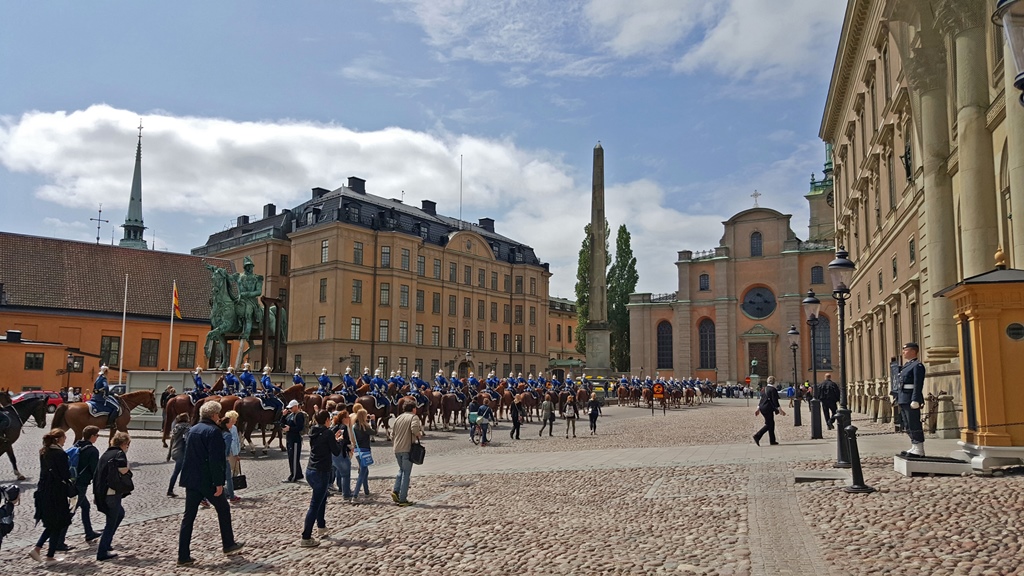
New Guard with Storkyrkan Church
This looked like a changing of the guard we would have to see for ourselves. We followed
the guard up the hill, but took a short cut into the courtyard where all the guard-changing
takes place. We were in time to see the new guard enter the courtyard on horseback (the
band had already entered and dismounted). The new guard also dismounted, but they took their
time about it (with every move choreographed), and handlers led the horses out of the
courtyard, presumably back to some cushy horse habitation.
New Guard Dismounting
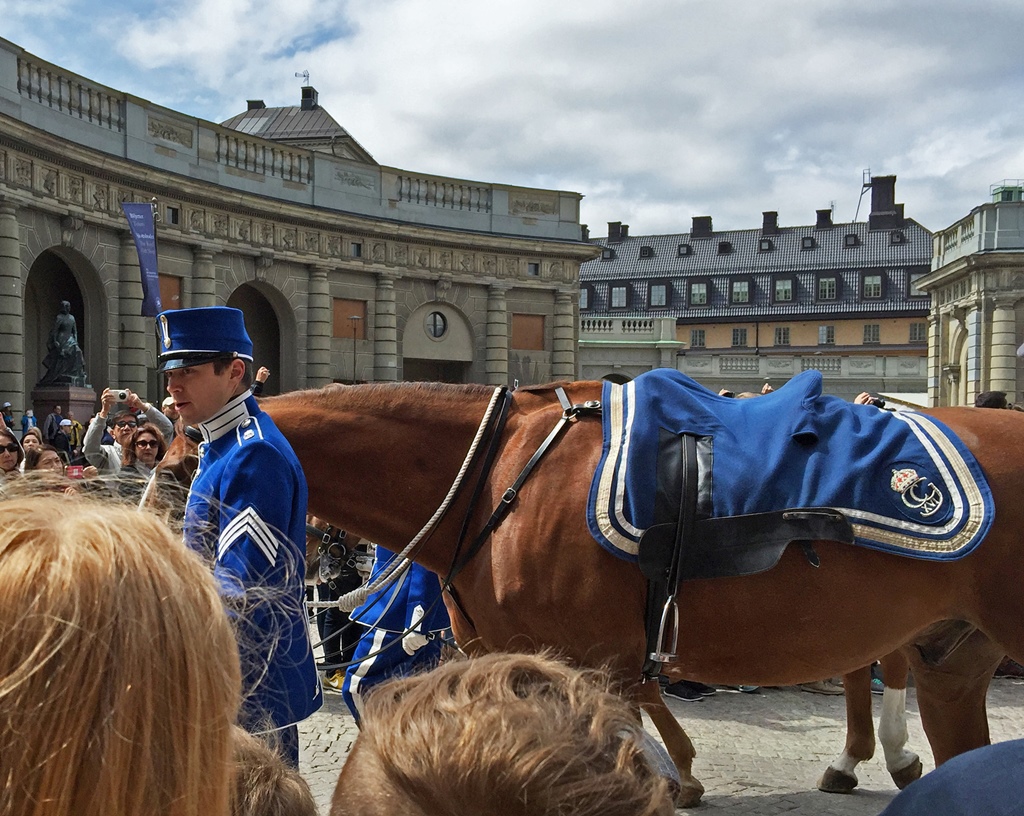
Horse Handler Leading Horse Out of Square

New Guard Being Reviewed
At this point we left the courtyard. We’d already seen one changing of the guard, and once
the horse hijinks were over, we figured this one would be pretty similar. And there were
other things we wanted to do, this being our last day in Sweden. The first place we wanted
to visit was Stockholm’s Cathedral, known as Storkyrkan. Fortunately, it was right next door.





